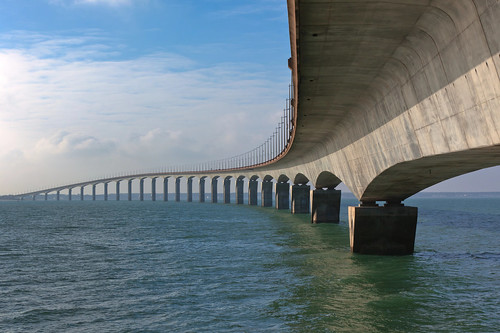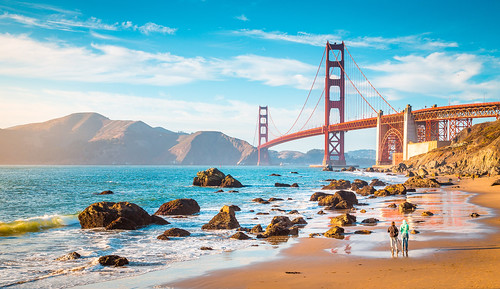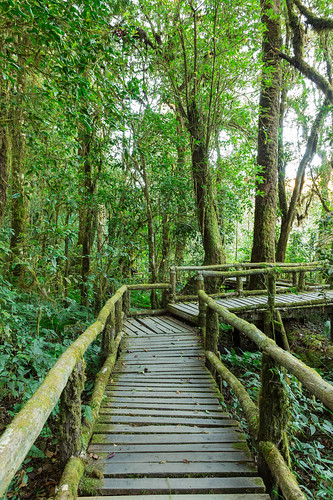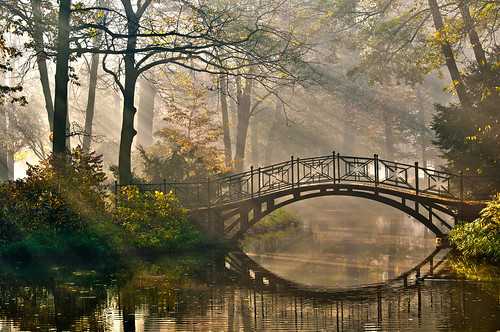I went to university in Boston. Driving from New York meant going over at least one giant bridge. Each time I hit that bridge, I’d notice something shift. My fingers clenched, my shoulders tightened, I hugged the divider, and focused hard on following those in front of me in order to make it to the other side. A few minutes after crossing, the color returned to my fingers and my whole body exhaled. Regardless of the season, state of the roads, or precipitation from the sky, crossing that bridge was often the most nerve-wracking part of that drive.

Curious, right?
Later in life, I’ve learned that I’m not alone. Heaps of humans feel the same when faced with one of those immense structural feats. Whether it’s San Francisco’s Golden Gate or a small town’s less iconic one, an otherwise laidback driver tenses when they show up. And, like most things in life, there’s more to the story behind the fears, stressors, mind obstacles, crossing, and actions of the entire process. There are even psychological theories based on the same thing.
Perhaps it’s worth uncovering the message and meaning beyond the monstrous pilings and pillars.

You in?
As travelers, we cross borders all the time. For international ones, there’s a process often involving an exit, a waiting space, and an entrance. We get our documents together, hand over a passport, someone (or these days, some machine) allows us entrance, and we step across a threshold to the other side. Each tactile step takes action, follows a direct path, and leads towards a desired goal.
Process, change, transition, becoming–what awaits on the other side is often different than from whence we came.

It takes courage to choose to cross that border, yet rarely do we speak of it.
It takes courage to show up on that other side even when it’s uncomfortable, yet we rarely speak of it.
It takes courage to carve your own path, especially when there is no actual roadmap for your particular one. Sometimes it takes a dream, sometimes it takes funds, sometimes it takes time and energy, sometimes resilience is necessary, yet it always takes bravery, determination, and a plan.
Consider how many of these bridges or crossings you’ve already encountered in your life. Most likely each one had similar elements, yet each its own. The Golden Gate bridge with its sparkly stanchions, the local one that opens like a drawbridge, a swinging one that takes you from one side of your hiking path to another, or even one like in the Florida Keys that stretches your drive for miles and miles over endless open water.

Each one forces us to encounter change, navigate risk, decide it’s time to shift spaces, deal with discomfort, and empowers our curiosity to seek what might lay on the other side. Sure, the travel and geographic ones might look a bit different to those psychological, hormonal, life, work, or mindset ones, but the strengths required are quite similar.
Our students take part in these changes and transitions all the time. Change is circumstantial—like primary to middle to secondary school and of course, a million micro-changes throughout the year.
And then, there’s the transition: a changing self-landscape where your perspective shifts and your own lens of looking at life alters. There are obvious ones like puberty, and invisible ones that follow the stories and challenges of each individual student. The journey of escalating education is a communal one, but the navigation of that personal one all our own.
While there might be one way to cross an actual bridge or get through airport immigration, there’s no one way to go through a transition. That journey is ours. And, if we’re lucky, we’ll encounter guides who can help us interpret, navigate, and uncover the knowing along the way.
When we shift physical locations, we decide something. For travel, it might be curiosity, intrigue, seeing a loved one, or exploration (either externally or internally focused). Yet in all other shifts or bigger life transitions, there are a myriad of elements at play. We may grow quiet, we may fight against it, the outside voices might cloud our inner one, we may feel as if we’re playing ping pong in our own minds, and the noise from others can make us doubt our choices or forge ahead with gusto.
Regardless, the beginning stages of this transition take us on a wild ride for a while—and then, there’s the other side. And as those who have been on their own journey continually tell us, that other side is ALWAYS worth the ride.
So, consider where you are. Regardless of stage, space, or age, where are you right now?
Is your journey taking shape, in that middle space, or are you a guide to others?
Whether you’re in that learning state or teaching the next generation the life lessons you’ve learned, like the bridge itself or the crossing, we can engineer those connections, forge ahead with reframing unease for excitement, find our guides, reflect on the journey, and channel a whole new view.
What will you uncover? Where will your adventure lead? What will you find on the other side? How will your journey leave its mark on the world?
The choice is yours—your bridge awaits.

“Transformation is not a destination; it’s a journey of continuous growth and self-discovery” - Tony Robbins
4 Tips to help navigate the twists and turns of life transitions

The Change: Events happen, it’s how we respond that shapes the story
“The secret of change is to focus all of your energy not on fighting the old, but on building the new!” - Socrates
Remember that bridge…the one that stops you in your tracks? You take one look and think, “nope, no way, that’s insanity and think I’ll never be able to make that leap.” Literally or figuratively, it’s all the same: you’ve talked yourself out of it before even attempting.
In psychology, the Bridges Transition Model is used to normalize the process of change. Using three components, we go from an old stop to a new start. There’s a tentative beginning amassed with uncertainty, a messy middle with considerable disorientation and limbo, and an ending where letting go begins. Whether the actual model or the visualization of a swinging bridge helps, the intention is to help understand our response to change, normalize the process, and navigate the emotions and behaviors associated with it all.
Whether you follow the notion of Glennon Doyle’s we can do hard things or Mel Robbins' 5-4-3-2-1 do the thing, the idea is the same. You’ll never feel like it, if you stay in your head you’ll talk yourself out of it, doubt is freakin’ loud, anxiety lies, and action can change it all.
The lesson? It’s normal to feel like this.
Being a beginner again isn’t easy, but it’s worth it…and the more we step into the challenges of noticing the emotions but not letting them stop us in our tracks, the easier that next change, that next obstacle, that next challenge, that next life event will become. Action teaches, and from each step into that unknown, we listen, we learn, we elevate, and we empower our own selves.

The Neutral Zone: Mulling amidst the messy middle
“It isn’t the changes that do you in, it’s the transitions. Change is not the same as transition. Change is situational: the new site, the new boss, the new team roles, the new policy. Transition is the psychological process people go through to come to terms with the new situation. Change is external, transition is internal.” - William Bridges
Consider the last week of December. Perhaps it’s a holiday celebration, a vacation, or a multi-day couch session. Often, we’re foggy, filled with cheese, and have absolutely no clue what day it is, or perhaps even the last time we put on real pants. That limbo, the waiting, the discomfort, perhaps anxiety producing weirdness of it all…that’s the messy middle of a transition. We’re not sure how we got here, unsure of where we’re going or how to get there, don’t know what end is up, and the crushing weight of it all is daunting.
Yup, that’s the in-between—and it’s normal.
The lesson: the middle teaches; we just don’t know the learning yet and have to go through it all to find out. You can’t save the princess at the end of the video game without searching the caverns, leaping gorges, or fighting off warlords who fling fire. You can’t get from 9th grade to 12th without going through the other grades. And you undoubtedly can’t be on the team for NASA that launches the next phase of space awesomeness without maneuvering through the mayhem that is engineering, coding, science, struggles, and striving to earn your spot.
Here is where we develop those future pathways, we uncover a whole bunch of stuff, and clarity begins. The middle is hard. It takes determination, resilience, patience, grit, saying no often, re-evaluating, and starting over and over again as often as necessary. It’s those clenched fingers and forging ahead. Stay put, sit in the discomfort, deepen your breath, fidget if you must, but stay there.
That in itself is a huge win.

The Ending: when one door closes and the world opens
“Adding wings to caterpillars does not create butterflies. It creates awkward and dysfunctional caterpillars. Butterflies are created through transformation.” - Stephanie Pace Marshall
I recently heard author, entrepreneur, and mid-life activist Chris Conley speak. Founder of Modern Elder Academy, he now helps people “reimagine, repurpose, cultivate transition, learn how to own their wisdom, and reframe their experience with aging.” While he’s on a mission to rebrand midlife, he now calls that once-midlife crisis a midlife chrysalis. Imagine the moment the butterfly finally exits that dark, goopy caterpillar cocoon in which it’s remained dormant and struggled to find its wings. That moment, that ending of the journey within the shell, and the appearance of these new brilliant colors and shapes—that’s the moment. The transformation has happened, and the adventure of flight ensues.
The lesson: the ending involves disengagement, grieving, releasing the familiar, and stepping into the unknown. The student who has excelled in school and is known throughout the community for their talents gets to graduation, crosses the stage, flips the tassel…and now what? They’ve made it to the end of that sometimes uncomfortable, often growing, usually safe space, yet a new journey awaits. But in this one, they tap their talent, experience, resources, self-worth, and ability to cultivate their curiosity and lend their voice to fashion a new story or be a part of a new community.
Their fear might be there, the anxiety feels palpable, the imposter syndrome sometimes screams, but they plant their feet firmly, push those shoulders back, take a deep breath, and lean in, knowing they’ve been here before and can do hard things.

The Becoming: Trusting your wings and taking flight
“Crossing the bridge requires letting go of what you can’t control and embracing the uncertainty of what lies ahead.” - Unknown
At this March moment, northern hemisphere schools are in the middle of the process. Still dealing with the cold of winter—and at this point, it’s a time of impatiently awaiting spring’s arrival. The restlessness is unmistakeable. While students may presently be amongst that messy middle, the hope, like that desire for spring, is that motivation needed for the journey.
The belief in better days ahead, the pull towards something more, the hankering for that positive change—it’s buzzing. We’re seeing the world anew and it feels prickly, yet peaceful. Michelle Obama reminds us to “dare to be vulnerable,” to use our stories to change the world. We’ve made it over the bridge. We’re not only ready for next, but we’re seeing it all through a whole set of new eyes. So, whether you picture Queen Elsa finding herself in Ahtohallan or Moana reemerging from her oceanic adventure, know that one voyage has concluded, but the awakening is just beginning.
The lesson? Well, it comes from a childhood story of The Velveteen Rabbit:
“You become. It takes a long time. That’s why it doesn’t happen often to people who break easily, or have sharp edges or who have to be carefully kept.”
It could mean doing something different than the norm, stepping out of that comfort zone, living your own story, or a million other things. It could mean taking a different path than your family, choosing a different location, lifestyle, or mindset.
Perspective shifts are a process.
Sometimes they’re instantaneous, sometimes they take a lifetime. But, like the rabbit says, “once you are Real you can't become unreal again. It lasts for always.”
See you on the other side of the bridge.

Please click the photo below for a collection of my Through the Eyes of an Educator columns:
Stacey Ebert, our Educational Travels Editor, is a traveler at heart who met her Australian-born husband while on a trip in New Zealand. Stacey was an extracurricular advisor and taught history in a Long Island public high school for over fifteen years, enjoying both the formal and informal educational practices. After a one year 'round the world honeymoon, travel and its many gifts changed her perspective. She has since left the educational world to focus on writing and travel. She is energetic and enthusiastic about long term travel, finding what makes you happy and making the leap. In her spare time she is an event planner, yogi, dark chocolate lover, and spends as much time as possible with her toes in the sand.
Check out her website at thegiftoftravel.wordpress.com for more of her travel musings.

